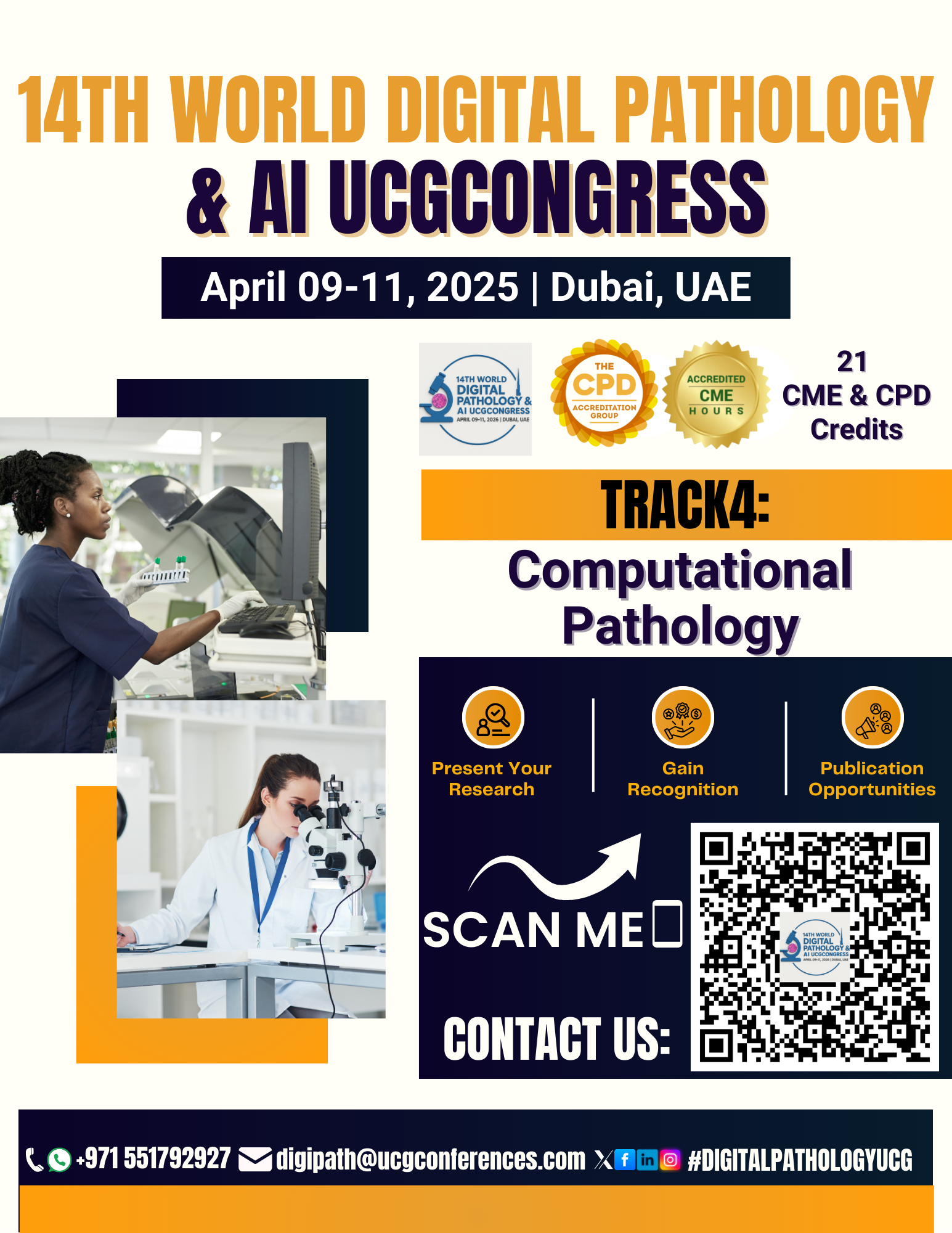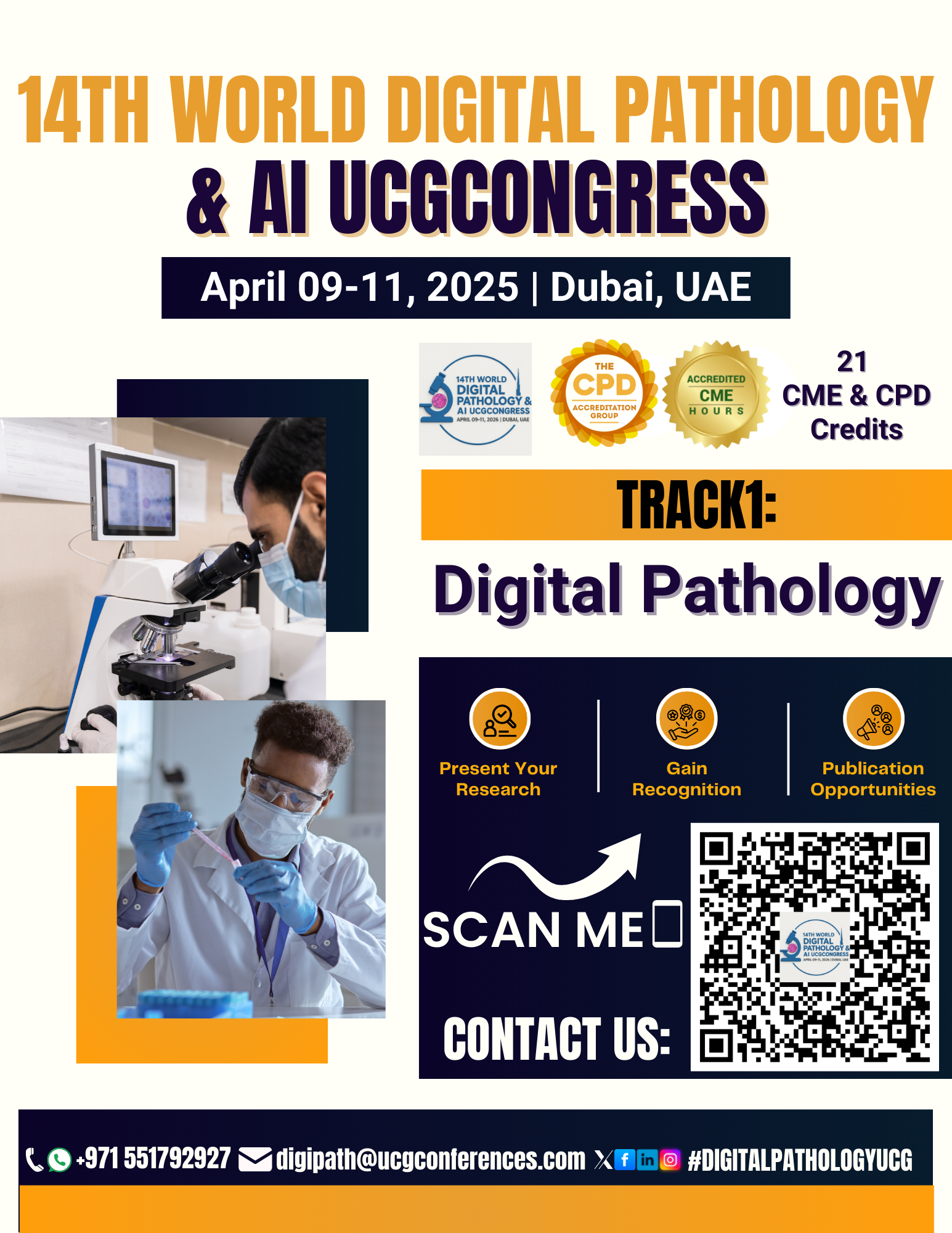



Sub track:-
Enhanced Image Quality Quantitative Analysis, Faster Turnaround Times,...

Sub track:-
Integration of Imaging Modalities, Advanced Image...

Track Overview:
Computational
Pathology is transforming the landscape of diagnostic pathology by utilizing
advanced algorithms, machine learning, and quantitative imaging to enhance the
analysis of tissue samples. This track will delve into how computational tools
are used to analyze complex pathology data, extract meaningful insights, and
improve diagnostic accuracy and patient outcomes.
Key Topics:
Quantitative
Imaging in Pathology:
Utilizing computational tools for image processing and analysis, including
segmentation, feature extraction, and tissue characterization.
Pattern
Recognition and Classification:
Application of machine learning for identifying patterns in histopathological
images to classify diseases like cancer, infectious diseases, and autoimmune
disorders.
Big
Data and Multi-Omics Integration:
Integrating pathology data with genomics, proteomics, and other omics data to
create comprehensive models for disease understanding and personalized
medicine.
Automation
and Workflow Optimization:
Using computational tools to automate routine tasks in pathology labs, speeding
up diagnostic processes and reducing human error.
Validation
and Standardization:
Ensuring computational models are validated across different datasets,
platforms, and institutions, and adhering to industry standards for clinical
deployment.
Learning
Objectives:
Understand
the role of computational tools in analyzing and interpreting pathology images.
Explore
the use of machine learning algorithms in pattern recognition and disease
classification.
Discuss
the integration of computational pathology with multi-omics data for improved
diagnosis and treatment.